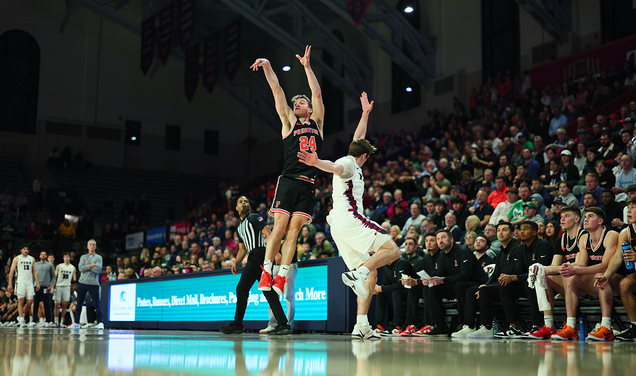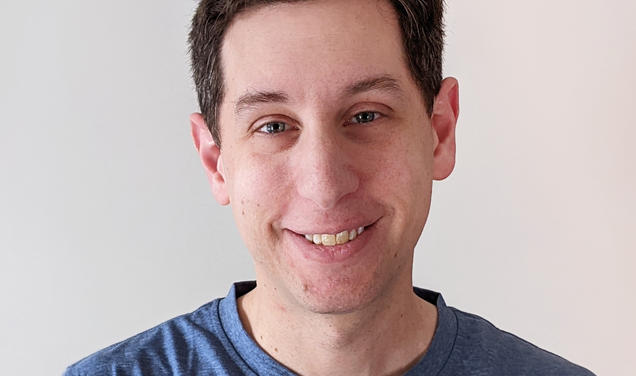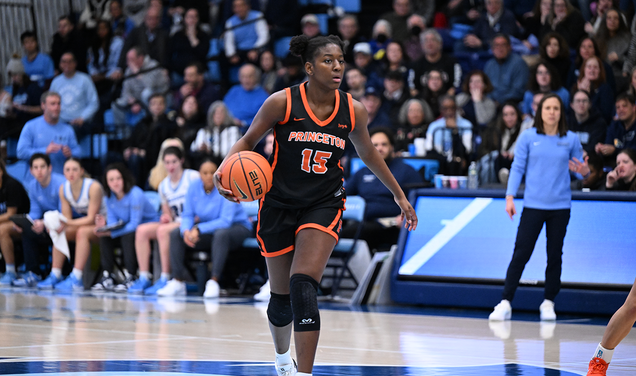
In May, The New York Times published an essay by Jonathan Malesic, a writing teacher at Southern Methodist University, titled “My College Students Are Not OK.” At colleges across the United States, the essay asserted, student engagement was a casualty of the COVID pandemic. Malesic and his students had returned to in-person instruction, but students “just weren’t doing what it takes to learn,” he wrote. “They didn’t even seem to be trying.” The essay prompted much discussion in higher education. PAW asked Dean of the College Jill Dolan to discuss the situation at Princeton in an essay of her own.
As we ease out of the public health emergency of the past few years, many of us on campus are pondering how to reset for the “new normal,” whatever that turns out to be. The remote teaching-and-learning experience during the height of the pandemic, and our willingness to use remote options for students required to isolate when diagnosed with COVID once they returned to campus, have prompted varied responses. For some, virtual learning has profoundly challenged the once-sacrosanct view that a liberal arts undergraduate education requires live, in-person, face-to-face instruction. For others, that view has been resoundingly affirmed.
As we prepare for what we hope will be a smoother, less wearying year, with less student, faculty, and staff illness and with more familiar teaching and learning routines, we’re also taking stock of new trends and their implications for Princeton’s undergraduate academic program. What will teaching and learning look like in the near future? What new and innovative pathways might we chart for undergraduate education as we absorb our experiences from the COVID years?
Jonathan Malesic’s New York Times article, “My College Students Are Not OK” (May 13), diagnoses student malaise and learning loss during the pandemic in ways that resonate with some of what we were seeing and hearing from faculty and students at Princeton. Based on his experiences teaching at the private Southern Methodist University in Dallas and at a nearby public university, Malesic describes undergraduate students unwilling to come to class, learning less in the classes they do attend, and generally disengaged with their own learning. Zoom instruction encouraged students with whom he worked to clamor for less in-person interaction and to challenge the academic protocols that once were standard.
We’ve observed such behavior at Princeton, too, although these trends aren’t universal among our students, many of whom very much appreciate the resumption of in-person interaction. But as students and faculty returned to face-to-face teaching for the 2021-22 academic year, the academic social fabric — and its baseline expectation of going to class and investing in learning — did seem frayed. I’m optimistic that the last several years of disruption will herald a new era of even better teaching and learning at Princeton, one in which the return to residential education will inspire faculty and students alike. To be sure, the musings I share here are my own but will, I hope, generate profitable debate.
COVID certainly explains part of the current teaching and learning ecology. To ensure that we meet New Jersey’s isolation requirement for those who test positive, we encouraged faculty during the last academic year to open a Zoom “window” into their classroom for absent students. While we acknowledged that this couldn’t begin to emulate the full experience of being present in class, the gesture at least allowed students learning remotely to listen in on, if not occasionally participate in, what transpired. We were careful not to call this “hybrid instruction,” since for the most part, our classrooms aren’t equipped with the technology to make such teaching fully effective. But these Zoom windows alleviated some of the stress for students required to stay away from classrooms, mostly by allowing them not to be counted absent, thanks to their sort-of-present virtual reality.
For some faculty, however, even opening that Zoom window was stressful and disruptive, because like it or not, they felt compelled to try to teach those in the Zoom room as well as those in the classroom. Some instructors weren’t sure whether real-time Zooming was adequate, or if they should also record their lectures for students to watch on their own time. All of our faculty felt pressured to meet the moment’s complexities, despite their general relief and gratitude that they were back in the classroom. Some reported teaching to classes in which more than two-thirds of the students were absent at once. Others reported constant requests for Zoom windows from students sick with other illnesses (and those with job interviews, team practices, or conflicting commitments), as well as for additional accommodations to replicate the flexibilty and convenience of remote teaching. In other words, once that Zoom window opened, faculty found their courses suddenly defenestrated.
In response, my colleagues and I in the Office of the Dean of the College often suggested faculty simply say “no,” and urged them to remind students that Zoom options were for COVID illness only. But we knew that for some instructors, it was hard to brake on the slippery slope between allowing for COVID illnesses and other absences. And heeding student requests could mean the difference between good and bad teaching evaluations, which bear on course enrollments and an instructor’s reputation. In addition, saying “no” often felt more logistically and emotionally complicated than simply acquiescing.
Let’s reimagine what it means to return to those classrooms by urging faculty and students to find pleasure and joy in their teaching and learning, to take risks with their comments and their intellectual positions, to evince a thoughtful willingness to change their minds when adequately persuaded. This, it seems to me, is the advantage we might take of the pandemic interruption.
Our policies, however, require students to be fully present in class. Those who miss more than two weeks of instruction — for any reason — are encouraged to take a leave of absence, since our academic contract with undergraduate students is built on face-to-face instruction. COVID and our year of remote pedagogy opened that contract to challenge and widened two additional fault lines that require our collective attention.
First, cultural shifts in attitudes toward higher education inevitably influence our teaching and learning environment. When so many state legislatures emphasize learning as simply an instrument for earning, virtual instruction seems efficient and viable. And when education becomes instrumental, students and familes tend to see universities as simply delivering an outcome, rather than a carefully structured engagement with knowledge. Universities like Princeton must engage students in thoughtful conversations about the value of a broad, rich, residential liberal arts education.
Second, even before the pandemic, concerns about students’ mental health in some cases influenced their attitudes toward their learning. More students referred to stress and anxiety in their advising conversations. Our Office of Counseling and Psychological Services reported increased demand for appointments. Some students’ anxiety and depression were exacerbated by the fear, uncertainty, and upset COVID caused. While we were proud of their resilience throughout the last few years, some students attest that they’re working hard to address what they experience as a new emotional fragility. The Undergraduate Student Government has made mental health a central part of its 2022-23 agenda.
During the confusion and complexity of the pandemic, I urged instructors to exercise more compassion than usual in their teaching and grading. What such empathy meant in practice was left to each course leader to define and apply according to their own teaching contexts. All our faculty understood that some students’ difficult home situations made remote learning challenging. We all knew that many others were grappling with the grief of losing family or friends to the virus. We extended the Pass/D/Fail policy, allowing students to take more courses than we typically allow under this more generous grading rubric.
Relaxing some policies made sense during a terrifying pandemic, when we were determined to continue teaching so that students could advance their progress to their degrees. But with COVID becoming endemic and less likely to cause severe illness in our 98-percent-vaccinated campus population, some students continue to expect faculty to preserve the remote instruction and more relaxed grading practices of pandemic-era instruction. Now that COVID constraints are easing, can we or should we rethink the norms of what “rigor” means in an undergraduate education? Can faculty excite students about learning while balancing rigor and empathy in their teaching and grading? Is the binary between rigor and empathy false?
Well before the pandemic’s onset, a group of Princeton faculty, like instructors across higher education, had begun to experiment with new assessment methods. Variously called “specs grading” or “ungrading,” these protocols often form an explict contract with students at the start of the course about the work they must produce and standards they must accomplish to get the grade they desire. Rather than relying on grading rubrics set only by the instructor, these more collaborative grading methods invite students to participate in theorizing and enacting their own assessments in ways that empower them and require them to find agency in their own learning. Alternative grading practices maintain the requisite rigor of learning at Princeton, but they insist students actively partner in what, how, and how well they learn.
Not all faculty will or should elect new assessment practices, but debating different ways to think about grading is healthy for pedagogy at large. If we can rethink grading, might other parts of the inviolable teaching-learning contract also be reconsidered and renovated? For example, a recent New America survey of higher education reported that 17 percent of students think more highly of remote delivery than they did before the pandemic. Princeton will always privilege face-to-face, in-person learning. But given what remote teaching taught us, how might we rejuvenate the lecture class, for example? Perhaps we should encourage more faculty to “flip” their classrooms. In this pedagogical scenario, noninteractive lectures are posted for viewing asynchronously online while the time used for faculty and students to gather in class is devoted to active learning. Almost all studies show that is more effective for students’ knowledge retention and application.
We don’t know which attitudes will persist when we’re truly beyond COVID. But if some students remain hesitant to leave their dorm rooms to attend a seminar or precept, how can instructors make discussion courses and sections more like studio courses and labs, in which students learn in an embodied, active fashion? How might we infuse course meetings with so much intellectual excitement and allure that FOMO, Fear Of Missing Out, compels students to attend regularly and participate vigorously?
We can’t return to the “before times,” for which we’d simply invite everyone back with the same posture to the same classrooms we preserved untouched while the virus raged. The cultural moment has shifted palpably, and the students and faculty who reinhabit those places want to see the fact of “now” acknowledged there, rather than letting the architecture dictate that we can carry on teaching and learning as we did before. We might take the opportunity of the moment to reassess.
Let’s reimagine what it means to return to those classrooms by urging faculty and students to find pleasure and joy in their teaching and learning, to take risks with their comments and their intellectual positions, to evince a thoughtful willingness to change their minds when adequately persuaded. This, it seems to me, is the advantage we might take of the pandemic interruption. Our return to the classroom should allow us to write a new story about what happens within Princeton’s storied halls. A new pedagogical narrative would let us make the most of what we learned from the pandemic years.
Because this is the central value of a face-to-face liberal arts education: the chance to see, in real time, our collective minds transform. Learning happens in present-time interactions with faculty and other students; face-to-face learning is a gift to cherish, not one to take for granted or scorn. Rigorous learning requires those present in the room not just to put their minds on the line but to stand behind ideas that might be unpopular or radically different and argue their merits. Virtual learning makes taking a meaningful stand more difficult, because we’re not breathing the same air and we can’t see the nuances of one another’s expressions and reactions as we can when we’re present, live, together.
The charge that arcs among those present in the room can be life-changing. Good teachers are often charismatic because they know what it means to reach others with the force of their ideas and their personalities and their embodied commitments to the effects of sharing and creating and critiquing knowledge. The community of the classroom — and the community of the liberal arts campus — needs that frisson of wonder and awe, of the Jewish theologian/activist Abraham Joshua Heschel’s “radical amazement,” to re-imprint the excitement of learning on us all.
Performance theorist Herbert Blau once wrote that the power of witnessing performance comes from the spectator watching the actor dying in front of their eyes. I find this simple fact poignant. Part of being together in space and time is that we witness, unmediated, one another’s mortality (yes, even the mortality of 18-to-22-year-olds for whom death is, hopefully, distant). A Zoom connection can break because of a mishap with technology. But the spark of connection and transformation in a classroom can keep zapping around the assembled until the course meeting ends, and carry those who felt it out onto the walks of the campus with a heightened sense of possibility and understanding. In the liminal threshold of the classroom, we might witness our mutual mortality, but we also work to create a future we haven’t yet conceived.
So, Princeton students and faculty, are we OK? I hope so. But we can do better than that. We can be visionary, committed to the profound pleasure, challenge, and impact of education, and change ourselves and the world with what we teach and learn.






2 Responses
Shelley Amsel
2 Years AgoTeachers Up Front
Three of my in-person, face-to-face teachers in college have influenced my life immeasurably. This would not have happened using remote learning.
Richard M. Waugaman ’70
2 Years AgoReason for Optimism
In “Coming Back” (September issue), Dean Jill Dolan outlines several causes for concern. But she explores these so cogently and eloquently that I feel reassured Princeton will meet this challenge, with leaders like her.
I did notice her statement that “heeding student requests [for various accommodations] could mean the difference between good and bad teaching evaluations, which bear on course enrollments and an instructor’s reputation.” This will not be news to anyone, but something crucial has shifted in the power balance between students and faculty. Both may now be equally anxious about how the other will evaluate them. Perhaps tenured faculty are an exception. I recall when student evaluations of teachers were introduced (1967 or so?). It seemed like a great idea at the time. I’m not so sure anymore.